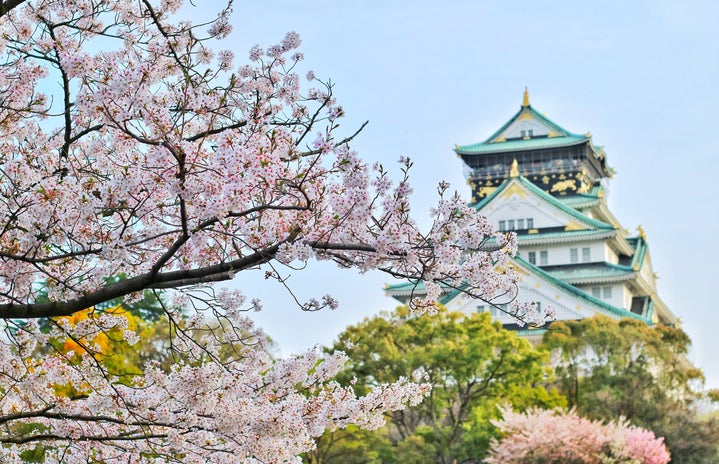Japanese is one of the hardest languages to learn, with three different writing systems, honorifics, and regional speech differences. But don’t worry—learning Japanese shouldn’t be difficult as long as you enjoy yourself along the way! Here are 7 tricks on how to have fun while learning Japanese:
- First things first, learn the basics from an elementary textbook
-
If you are just starting, learning the basics is best done through an elementary textbook. But, don’t get scared away by the word “textbook”! These textbooks are made for children whose attention spans are shorter than yours, so you will be able to absorb information like a sponge. With cute pictures and simple instructions to guide you, learning from a textbook will be fun again. It will explain basic grammar rules like sentence structures, particles and simple vocab that will set you up for all the other tricks in this article.
Struggling to find a good entry-level Japanese textbook? Check out the Genki series that my friend recommended!
- Make Japanese-speaking friends/Get a Japanese texting buddy
-
Now that you learned a little bit of the basics, it’s time to practice using them. The best way to practice Japanese is to make friends who you can talk to in Japanese.
Texting is recommended if you are still a beginner and you want to take time to translate and respond to messages. But even if you are still learning, don’t be afraid to have oral conversations! Your friend can help you learn the fun Japanese slang or help correct your textbook-centered vocab.
- If it’s hard to find Japanese friends, make a Japanese food Instagram account
-
This is something that I did to learn Spanish, and I think it will work just as well in Japanese. First, make a new Instagram account. You will dedicate that account to posting food reviews of your favorite restaurants or some new recipes you’re trying out. Note that the food you post doesn’t have to be Japanese, although it might help you learn about Japanese food culture. Now, an important rule is to write captions exclusively in Japanese. Yes, even the hashtags. This will help you actively use and test your knowledge of the grammar rules that you learned in the textbooks. It’s okay if you can’t post every day, but posting routinely, whether that may be daily or weekly, will help you refresh your memory of the vocab you learned!
You may also get Japanese-speaking followers with who you can practice speaking and writing. You can also meet people who are also trying to learn Japanese, which means you might be able to find a study buddy!
- Anime/Japanese Drama
-
Okay, this is a controversial one in my opinion. Although in no way does watching anime or Japanese drama help you get a realistic understanding of Japan, immersing yourself in Japanese pop culture can help fuel your passion for Japanese culture. Plus, it could motivate you to learn more Japanese to understand some of the references made in the anime or Japanese drama.
- Journal in Japanese
-
Journaling at first might be difficult. It can be frustrating to try to express your thoughts, only to not know what to write next. But with consistent practice, you will be able to write more and more, and learn how to think in Japanese. This is an important part of becoming fluent in Japanese. Even though learning a new vocabulary for becoming a better conversationalist may help you score better on a language exam, learning to think in a language will help you integrate the culture of the language into your identity. It will help you think more like a Japanese person and see the world in a new way.
- Join a Japanese cultural club
-
Joining a cultural club is the best way to meet people who are interested in Japanese culture or even people who are from Japan themselves who want to connect with other people interested in Japan. The events there will help you learn the culture, as well as force you to learn the language, as there are many Japanese speakers around you. Having people around you who are learning Japanese will help you stay motivated as well.
If you don’t know which one to join, try reading some tips from a student who was looking for a Japanese-American cultural experience!
- Associate kanji with meanings and images
-
Kanji (Chinese characters) is hard to memorize. Believe me—even as a person who grew up in Japan all my life, I am still struggling to remember basic kanjis. One tip that can help you is to understand the meaning behind each kanji. Take time to search up the meanings, and those shapes will start to make sense. For example, 森 means “forest”. The little 木 in the kanji symbolize trees, which makes sense why a bunch of trees in a kanji will represent the word “forest”.
An even better tip is to draw out images for each kanij. The image doesn’t have to represent the meaning of the kanji, but should be something memorable. For example, you can draw a picture of a man kneeling down, facing the left direction and spreading his arms to visualize the kanji 七. Thinking of each image helps you slow down and take time to process each kanji, and it makes learning kanji (a usually dull chore) fun!
Remember, learning a language does not happen overnight; patience is necessary. But it doesn’t have to be so hard. You can make new friends along the way, post on Instagram or draw funny pictures. Ganbatte (you can do it)!


